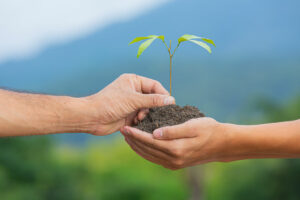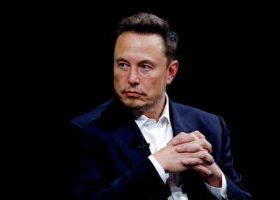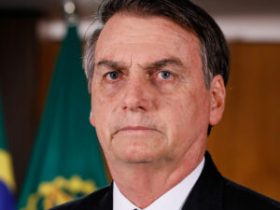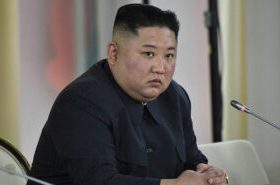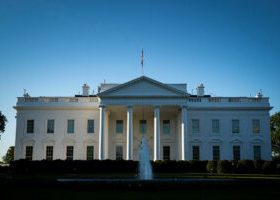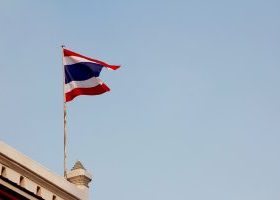(Part 3)
It is clear from what we have written so far that sustainability goes much further than just protecting the physical environment from human abuse.
As we have seen, the Semirara Mining and Power Co. (SMPC), in order to demonstrate that sustainable mining is not an oxymoron, tries to align its corporate goals to the 17 Sustainable Development Goals (SDGs) of the United Nations (UN). So far we have described the corporate strategies and programs that are aligned with the first nine SDGs of the UN. We shall now complete the list so that in its small and humble way, SMPC can serve as a role model for other mining companies in the Philippines, one that is trying to make its operations compatible with sustainability.
I am proud of the fact that I am an Independent Director of the parent company of SMPC, DMCI Holdings, Inc., a publicly listed Philippine corporation. As an Independent Director, I am not beholden to protect only the interest of the shareholders. Under Philippine laws, I have to protect all the stakeholders of the corporation, especially the rank-and-file workers, the management, the suppliers, the immediate community in which the enterprise is located and the nation at large. I am glad to report that the interests of these stakeholders have not been given short shrift by SMPC, as the initial listing of the SDGs have shown.
Let me now proceed to the eight remaining SDGs.
The 10th SDG has to do with reducing inequalities. From the macroeconomic point of view, we already saw how the community in which SMPC operates has already attained what the Administration of President Ferdinand Marcos, Jr. is still striving for, i.e., to reduce to a single digit the level of the nation’s poverty incidence. Already, the host community of SMPC, as of 2021, had a poverty incidence of 8% (the National Economic and Development Authority or NEDA targets 9% for the whole nation by 2028). SMPC is now focusing on upskilling, reskilling, and retooling out-of-school youth to help them to be employed or to be small-scale entrepreneurs. Women and marginalized groups are especially targeted in social development projects.
For SDG No. 11 (Sustainable Cities and Communities), SMPC has non-stop mine rehabilitation and restoration programs, rural electrification, construction and maintenance of road networks (especially farm to market roads) and livelihood infrastructure such as a commissary, a food court, and a wet market.
For SDG No. 12 (Responsible Consumption and Production), there are programs for water resource management, the reduction or management of emissions, wastes, and affluents. There are programs in educating the community in the efficient use of energy, responsible sourcing and green criteria for suppliers, and bottom ash repurposing.
Directly related to mitigating climate change or protecting the physical environment are carbon offsets through afforestation and reforestation; biodiversity offsets through marine and terrestrial conservation programs, capacity building towards a carbon transition roadmap, and emergency response and disaster resilience programs.
SDG No. 13 directly targets the climate change issue. SMPC is one of the pioneers in obtaining carbon credits through afforestation and reforestation. It obtains biodiversity offsets through marine and terrestrial conservation programs. It has appropriated P1.5 billion for climate-related investments. It is undertaking capacity-building initiatives towards a carbon transition roadmap. It has established an emergency response and disaster resilience program. It has partnered with the LGU of Caluya for a mangrove enrichment program.
Last April, SMPC celebrated Earth Day by planting 1,500 mangrove seedlings in Barangay Semirara, Caluya. This activity was supported by over 150 participants who included SMPC employees, Philippine Coast Guard personnel, and residents of the barangay. Mangroves support food security and livelihood since they serve as a valuable nursery habitat for fish and crustaceans. By stabilizing shorelines, these coastal forests also provide protection from a plethora of disasters such as storm surges, tsunamis, and rising sea levels. Furthermore, mangrove forests can sequester an estimated three to five times more carbon per hectare than tropical forests, thus playing a key role in climate change mitigation.
As regards SDG No. 14 (Life Below Water), a world-class initiative of SMPC is the Semirara Marine Hatchery Laboratory (SMHL). A flagship program to protect marine biodiversity, the SMHL is the only private facility in the Philippines that has spawned and propagated eight species of the giant clams, which are considered keystone species to the coral reef ecosystem. Reseeded giant clams promote diversity where they live as they attract corals, fishes, and small marine biota. These giant clams also clean their environment when they sip seawater for food and then release the clean, clear water back to the sea.
SDG No. 15 is Life on Land. One of those who accompanied me to visit Semirara island was a history professor from my university, the University of Asia and the Pacific, whose hobby is bird watching. He literally went wild when we visited SMPC’s Semirara Avian Biodiversity Conservation Center which maintains and operates a wildlife breeding aviary. It also serves as a rescue center that rehabilitates juvenile birds found fallen from their nests, injured adult birds, and other wildlife affected by storms or found before vegetation clearing during mine expansion projects. To date, this facility has released 66 captive-bred birds at the rehabilitation of the South Parian Mine. Among the birds protected were 34 endangered, 18 vulnerable. 18 near threatened species, totaling some 70 birds. My friend said that to a true-blue birdwatching afficionado, seeing birds in captivity, no matter how exotic, does not count. Thus, he spent time on his own going around the island with his bird watching equipment. He attested that he saw many beautiful birds in the wild in the Semirara forests. He happily reported that he even saw a “lifer,” the word used by birdwatchers when they see a new bird species for the first time in their lives.
In our very visit to the island, we saw in action the reality of SDG No. 16. Both the CEO and the COO of SMPC spent practically the whole day meeting with the various members of the community in dialogues, consultations, and issue resolutions. They involved as many of the stakeholders of the company as possible in obtaining views about a serious problem that was facing the mining operations: the seepage of sea water into the coal mines. We saw that through constant dialogue, the SDG of peace, justice, and strong institutions was very much in the minds of the owners and management.
We learned that there was absolutely no case of child or forced labor. At all levels, values formation is conducted and there are very clear guidelines on whistleblowing and community grievances.
There was strong evidence of SDG Goal No. 17 being addressed, i.e., Partnerships for the Goals, as there were very many examples of public-private partnerships for sustainable development and social development programs.
We had the opportunity to meet some of the barangay officials who confirmed that the channels of communication between the LGU and the company were always open as there were regular coordination meetings with local government units on the barangay development plans.
We learned from all our conversations with the various stakeholders of SMPC we talked to that all the positive aspects of mining we witnessed could be primarily attributed to the late Victor Consunji, one of the children of former Secretary of Public Works and Highways and founder of the DMCI group of companies, David Consunji. Having inherited from his father the outstanding qualities of leadership and concern for the common good, Victor spearheaded the conversion of the island of Semirara into a model of sustainable mining and a progressive community with one of the lowest poverty incidences in the Philippine archipelago.
Bernardo M. Villegas has a Ph.D. in Economics from Harvard, is professor emeritus at the University of Asia and the Pacific, and a visiting professor at the IESE Business School in Barcelona, Spain. He was a member of the 1986 Constitutional Commission.
bernardo.villegas@uap.asia

